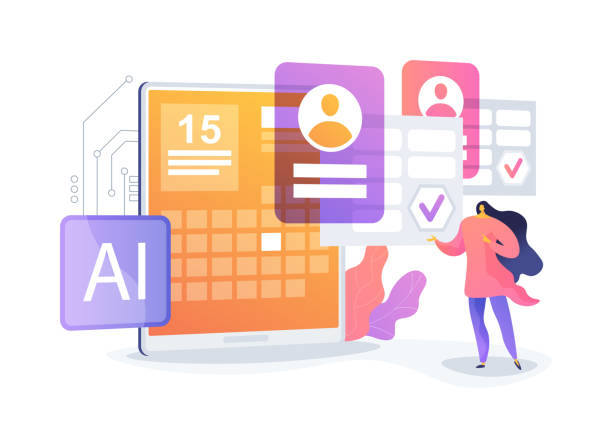The Importance of Online Presence and Personal Website Design
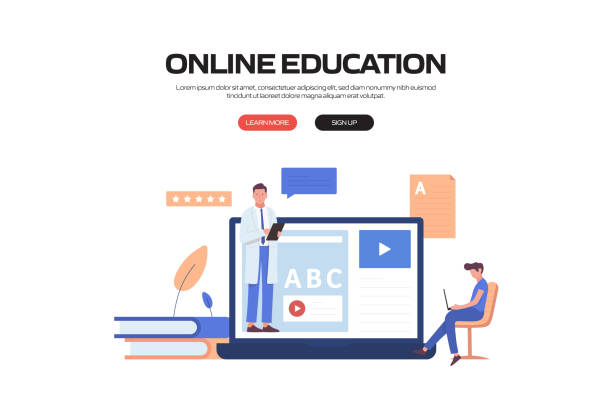
In today’s digital age, having a strong online presence is of vital importance.
Personal website design is not just a trend; it’s a necessity for anyone who wants to effectively introduce themselves in their field, in the job market, or even in the artistic space.
This platform is your permanent showcase on the internet, where you can display your skills, experiences, projects, and even personal thoughts in a controlled and professional manner.
A strong personal website helps you build and strengthen your #personal_brand, gain #online_credibility, and present a comprehensive #portfolio_showcase.
This section explains why investing time and energy in building a personal website is a strategic decision.
In fact, it’s a step towards owning your digital identity and not relying on social media platforms that might limit your access to your audience with algorithm changes or policy shifts.
In a nutshell, your personal website is the central point of your online presence, and all your other digital activities (such as social networks or guest blogs) should refer back to it.
This comprehensive guide will outline a clear path for you to confidently take the first steps in this direction and shape your digital identity in the best possible way.
Do you have an online store, but your sales aren’t as expected? Rasawb solves your problem forever with professional e-commerce website design!
✅ Significant increase in conversion rates and sales
✅ Unparalleled user experience for your customers
⚡ Click here to get a free consultation with Rasawb!
Planning and Goal-Setting Steps for Your Personal Website
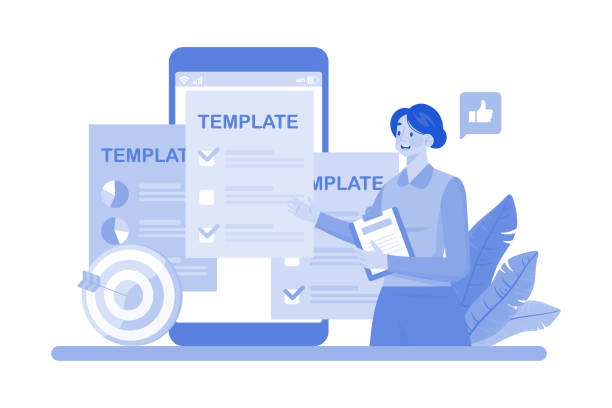
Before starting any personal website design project, meticulous planning and clear goal-setting are of paramount importance.
This stage is a fundamental educational step that determines the overall direction of your project.
First, you need to ask yourself: “What is my main goal for having this website?” Do you want to showcase your artistic portfolio, offer professional services, maintain a personal blog, or publish your resume online? Each of these goals requires a different design and content.
For instance, an artist might focus on high-quality images and visual galleries, while a writer needs a robust blog section and text samples.
A precise analysis of your target audience is also essential; who will visit your site and what kind of information are they looking for?
Understanding these points will help you make better decisions regarding the site structure, content, and even the visual appearance of your personal website.
For example, if your audience consists primarily of industry professionals, the tone and style of the site should be professional and informative.
Defining your budget and timeline is also a crucial part of this planning.
Do you intend to design the site yourself or hire a professional? Each option has its own financial and time implications.
Answering these questions forms the cornerstone of a successful and functional personal website design and prevents the waste of time and resources in subsequent stages.
Choosing the Right Platform and Hosting for Your Website
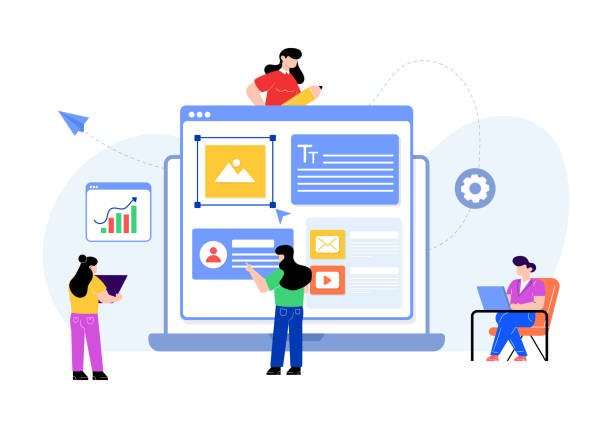
After the planning stage, it’s time to choose the right tools and infrastructure for your personal website design.
This section requires specialized knowledge and at the same time a comprehensive guide to the available options.
Choosing a website builder platform (CMS) and a hosting company are two key decisions that directly affect your site’s performance, flexibility, and cost.
Platforms such as WordPress, Wix, or Squarespace each have their own advantages and disadvantages.
WordPress, with its high flexibility and countless plugins, is a popular choice for many, but it may require more technical knowledge.
In contrast, Wix and Squarespace have simpler user interfaces and are more suitable for beginners, but they may impose limitations on customization.
Choosing a hosting company is also crucial; suitable hosting ensures the site’s loading speed, security, and availability.
Factors such as bandwidth, disk space, customer support, and price should be considered.
For example, shared hosting is cheaper to start with but may not be sufficient for high-traffic sites in the long run.
Building a successful personal website is highly dependent on powerful infrastructure.
The table below provides a comparison of popular platforms to help you make a decision:
| Platform | Advantages | Disadvantages | Suitable for |
|---|---|---|---|
| WordPress (WordPress.org) | High flexibility, numerous plugins, large user community | Requires more technical knowledge, hosting management | Bloggers, businesses, complex websites |
| Wix | Easy to use, drag-and-drop, internal hosting | Limited customization, difficult migration | Beginner users, small sites, quick portfolios |
| Squarespace | Beautiful templates, simplicity, internal hosting | More expensive, less flexible than WordPress | Artists, photographers, visual bloggers |
These initial decisions form the foundation for the success of your personal site creation.
Principles of User Interface (UI) and User Experience (UX) Design in a Personal Website
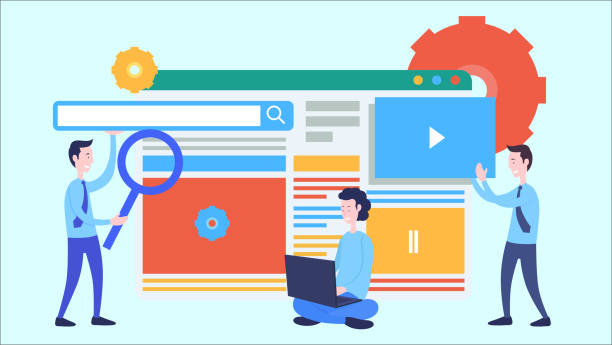
After choosing the platform and hosting, it’s time for the website’s design and appearance.
User Interface (UI) and User Experience (UX) design are two vital concepts in personal website design that directly impact the success and engagement of visitors.
A well-designed website not only looks good but is also easy to use, creating a positive user experience.
This section is an important educational guide for understanding these principles and applying them to building your personal website.
UI design refers to the visual appearance of the site, including colors, fonts, images, and element layout.
Its goal is to create an attractive and harmonious look.
In contrast, UX design focuses on the user’s overall experience with the site, including ease of navigation, loading speed, and access to information.
A site with excellent UX ensures users can easily find what they’re looking for and enjoy their time on the site.
For a specialized personal website design, attention must be paid to aspects like Responsive Design, meaning your site should display well on all devices (computers, tablets, mobile phones).
Simplicity, visual consistency, ample white space, and clear visual hierarchy are all key principles that help improve UX and UI.
Simple navigation and clear menus, distinct Call to Action buttons, and easy contact forms all help attract and retain an audience.
Remember that your personal site design should reflect your personality and expertise, but its usability must also be flawless to convert visitors into loyal customers or followers.
Do visitors to your online store leave before making a purchase? Don’t worry anymore! With Rasawb’s professional e-commerce website design services, solve the problem of converting visitors into customers forever!
✅ Significant increase in conversion rates and sales
✅ Unparalleled and engaging user experience
⚡ Contact us now for a free consultation!
Content Production and Maintenance Strategy for Audience Engagement

Content is the beating heart of any website, and personal website design is no exception.
After designing and launching, it’s time to produce and manage content that attracts and engages your audience.
This stage not only allows you to showcase your expertise but also provides a platform for interacting with your audience.
A targeted content strategy should address the audience’s thought-provoking content and at the same time have entertaining aspects to encourage them to revisit.
Are you going to blog, display portfolios, publish videos, or have an appealing “About Me” section? Whatever type of content you choose, it must align with your initial goals for personal website design.
The quality of content is more important than its quantity; original, valuable, and engaging content attracts an audience.
This can include in-depth articles in your area of expertise, practical guides, product or service reviews, or even your personal stories and experiences.
For a personal website, regular content updates are crucial.
This not only signals to search engines that your site is active but also gives visitors a reason to return.
Interacting with the audience through comment sections or contact forms is also an important part of content strategy.
You can pose thought-provoking content questions to encourage users to share their opinions.
Remember, your website’s content should be your voice and reflect your professional or artistic personality, while also providing useful and engaging information and enriching the user experience.
Search Engine Optimization (SEO) for Increasing Website Traffic
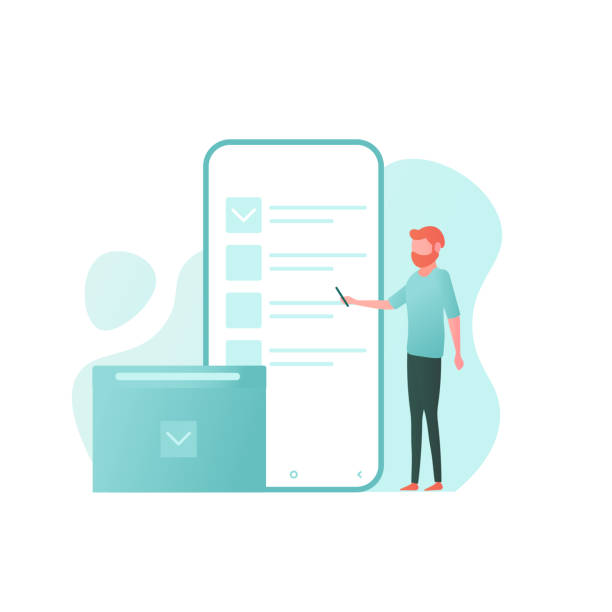
After you have meticulously designed your personal website and placed high-quality content on it, the next step is to ensure people can find it.
This is where Search Engine Optimization, or SEO, comes into play.
SEO is a specialized skill that helps you improve your website’s ranking in search engine results like Google.
The primary goal of SEO is to increase organic and targeted traffic to your site.
This section provides a practical guide for applying SEO techniques to your personal website design.
Multiple factors play a role in SEO, including choosing appropriate keywords, content optimization, building internal and external links, and optimizing site speed.
First, research keywords relevant to your field and naturally incorporate them into your site’s content.
Ensure that titles, meta descriptions, and page URLs are also optimized.
For example, if you are a graphic designer, keywords like “graphic design”, “graphic portfolio” or “logo design services” could be your target keywords.
Internal linking also helps search engines understand your site’s structure and identify more important pages.
Additionally, acquiring links from other websites (link building) increases your site’s credibility.
Site loading speed is also an important factor in Google’s ranking; the faster your site loads, the better user experience it provides, and the higher its ranking.
Using SEO analysis tools such as Google Analytics and Google Search Console helps you monitor your site’s performance and identify weaknesses.
By correctly implementing SEO principles, your personal website will become a powerful tool for attracting new audiences and showcasing your expertise.
Marketing and Promotion Strategies for Your Personal Website
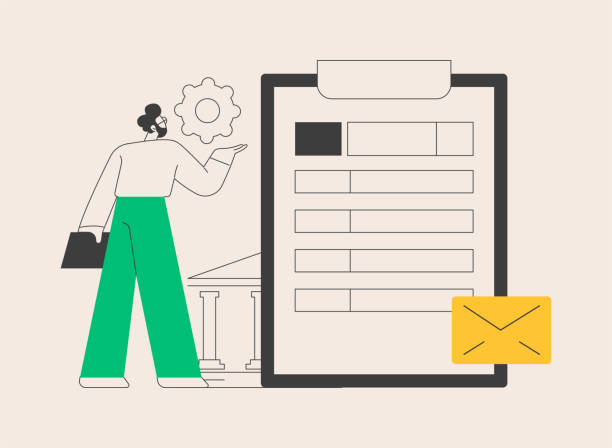
After designing your personal website and optimizing it for search engines, the next step is to introduce your site to a wider audience.
Marketing and promotion play a vital role in increasing visibility and attracting traffic to your website.
This section provides an analytical look at various digital marketing methods you can employ for creating your personal site.
One of the most effective ways is to use social media.
By sharing your website’s content on platforms like LinkedIn, Instagram, or Twitter, you can attract new audiences to your site.
Each social media platform has unique features and audiences, so your strategy should align with the chosen platform.
For example, for a designer, Instagram might be a better platform for visually showcasing work.
Email marketing is also a powerful tool.
By collecting visitors’ email addresses through subscription forms on your website, you can send regular newsletters, informing them of new content, services, or news about yourself.
Collaborating with other websites or individuals in your field (Guest Blogging) can also drive significant traffic to your site and simultaneously help improve SEO (through backlinks).
Participating in online or offline events and promoting your website in these contexts provides networking opportunities and can lead to new referrals.
Paid advertising (such as Google Ads or social media ads) can also be beneficial initially for increasing the visibility of your new website, although they require a budget.
The table below briefly outlines marketing methods:
| Marketing Channel | Description | Suitable for |
|---|---|---|
| Social Media | Sharing content and direct interaction with the audience | All personal websites (depending on content type) |
| Email Marketing | Sending newsletters and exclusive content to subscribers | Bloggers, service providers, educational websites |
| Guest Blogging | Writing articles for other websites and receiving backlinks | Professionals, writers, bloggers |
| Paid Advertising (PPC) | Paying to display ads on search engines or social media | Individuals with marketing budgets seeking fast results |
A combination of these strategies can transform your personal website design into a powerful marketing tool.
Maintenance, Updates, and Security of a Personal Website
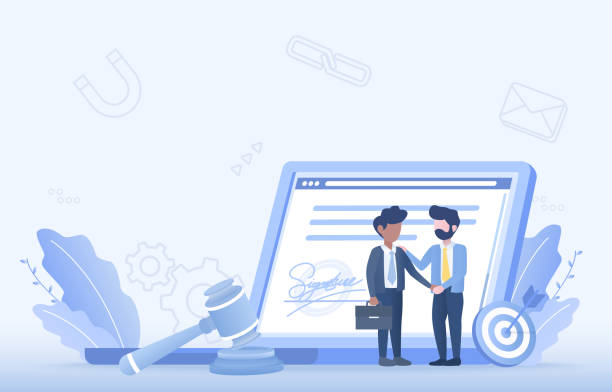
Personal website design is not a one-time process; rather, it requires continuous maintenance, updates, and attention to security.
A personal website that is not regularly maintained may encounter performance or security issues, or even a decline in search engine rankings.
This section provides a comprehensive explanation and educational guide for maintaining your website’s health and security.
The first and most important aspect is regular updates to the platform (such as WordPress), plugins, and themes.
Developers constantly release updates to improve performance and fix security vulnerabilities.
Ignoring these updates can leave your site vulnerable to cyber-attacks.
Regular backups of website data are also essential.
In case of any problem (such as a hacking attempt, human error, or server crash), having a backup allows you to quickly restore your site.
This can be done manually or using automatic backup plugins.
Website security is also a priority.
Using strong passwords, activating an SSL certificate (for data encryption), using a website firewall, and monitoring suspicious activities all help increase your site’s security.
Additionally, it is necessary to regularly monitor site performance.
Loading speed, broken links, and 404 errors can disrupt user experience and negatively impact SEO.
Tools like Google Search Console can help you identify these issues.
Finally, managing your personal website also includes monitoring user comments and spam.
Maintaining a clean and secure environment for visitors, is an integral part of website maintenance.
By following these tips, your personal website design will not only remain a powerful tool but will also continuously improve and stay secure.
Did you know that 94% of a company’s first impression is related to its website design?
Rasawb helps you create the best first impression by offering professional corporate website design services.
✅ Creating a professional and trustworthy image for your brand
✅ Easier attraction of potential customers and improvement of online standing
⚡ Get free corporate website design consultation
Earning Potential Through a Personal Website
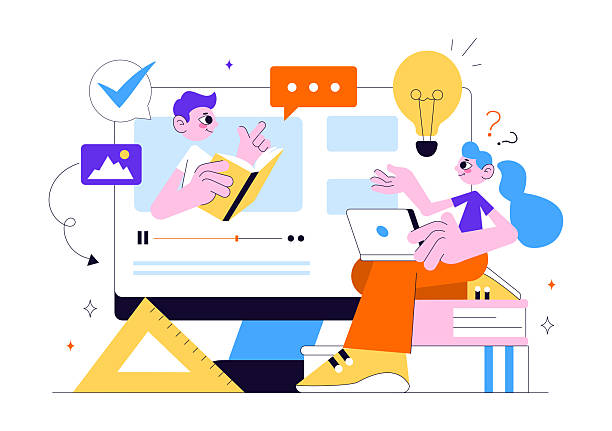
Many people undertake personal website design solely to showcase their resume or portfolio, but a personal website also has significant earning potential.
This section, presented as thought-provoking and specialized content, explores ways through which you can monetize your site.
One of the most common methods is Affiliate Marketing.
In this method, you promote others’ products or services on your site and receive a commission for each sale or click that occurs through your link.
This method is highly suitable for bloggers and individuals who perform product reviews.
Selling your own products or services is also an excellent way to earn income.
If you are an artist, you can sell your artwork.
If you are a professional, you can offer online consultations, training courses, or e-books.
Creating a personal site with e-commerce capabilities allows for direct sales.
Display Advertising through platforms like Google AdSense is another method.
In this case, ads relevant to your site’s content are shown to visitors, and you earn revenue based on the number of views or clicks on the ads.
This method is beneficial for sites with high traffic.
Accepting sponsorships or sponsored posts can also be a source of income.
Companies are willing to pay for writing an article or introducing their product on your site.
Finally, offering premium content or paid membership can allow you to provide exclusive content in exchange for a membership fee.
This includes advanced courses, specialized webinars, or access to a specific community.
Your personal website design can go beyond a simple display and become a sustainable source of income, provided you employ appropriate strategies.
The Future of Personal Website Design and New Developments
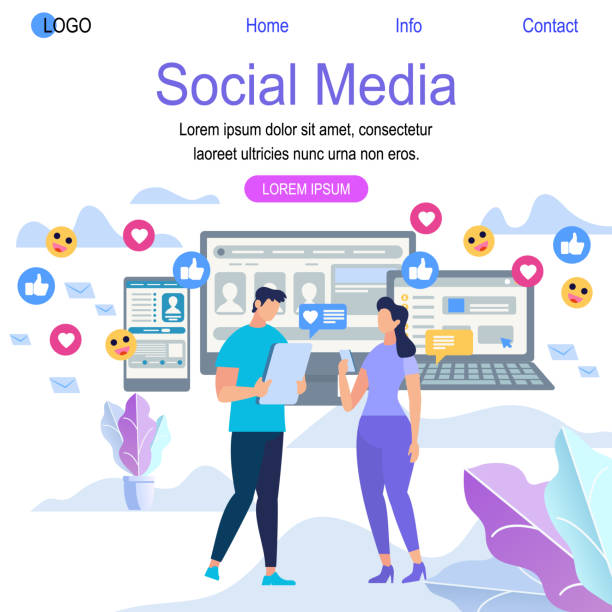
The world of personal website design is constantly evolving, and keeping pace with these changes is crucial for maintaining your site’s relevance and effectiveness.
This section provides an analytical look at future trends and new developments impacting personal website creation, and also offers news on the latest advancements.
One of the most important future trends is the increasing use of Artificial Intelligence (AI) and Machine Learning in the design process and user experience personalization.
AI tools can help you optimize content, suggest visual layouts, and even answer user questions through chatbots.
Voice Search is also growing, and personal website design needs to be optimized for it.
This means focusing on long-tail keywords and natural questions that users might ask verbally.
Virtual Reality (VR) and Augmented Reality (AR) also have the potential to change how users interact with websites.
Although still in early stages for personal websites, they are expected to offer more immersive experiences in the near future, especially for artists and designers.
The focus on Google’s Core Web Vitals and Page Experience has also become increasingly important, emphasizing site loading speed, interactivity, and visual stability.
This new news indicates that Google is placing greater importance on the actual user experience on a site.
Cybersecurity and data privacy will also always be a focus due to increasing threats.
Personal websites must adhere to the latest security protocols to gain and maintain user trust.
Finally, content personalization based on user behavior and providing unique experiences for each visitor, is another important future trend.
Your personal website design in the future will be increasingly intelligent, interactive, and tailored to individual user needs.
Frequently Asked Questions
| Question | Answer |
|---|---|
| 1. Why should we have a personal website? | To showcase skills, resume, portfolio, and build a professional personal brand. |
| 2. What is the first step for personal website design? | Defining the main goal of the website (e.g., portfolio display, online resume, personal blog) and the target audience. |
| 3. How important is choosing a suitable domain name? | It is very important; the domain name should be relevant to your identity, memorable, and easy to type (e.g., your first and last name). |
| 4. What kind of content should we include on a personal website? | Usually includes “About Me”, “Resume”, “Portfolio”, “Contact Information”, and optionally a “Blog” section. |
| 5. What does Responsive Design mean and why is it important? | It means the website displays correctly and optimally on all devices (mobile, tablet, laptop) and is vital for user experience and SEO. |
| 6. What platforms are recommended for building a personal website? | WordPress for more flexibility and control, or using Website Builders like Wix or Squarespace for simplicity. |
| 7. How can we improve personal website SEO? | Using relevant keywords, meta descriptions, high-quality and up-to-date content, optimizing images, and loading speed. |
| 8. What are the main challenges in maintaining a personal website? | Regularly updating content and plugins, regular data backups, and monitoring website security. |
| 9. Do we need programming knowledge for personal website design? | No, with Content Management Systems (CMS) like WordPress or website builder tools, a personal website can be created without coding. |
| 10. How can we promote and introduce our personal website? | Sharing links on social media, adding links in email signatures, business cards, resumes, and professional networking. |
And other services of Rasawb Advertising Agency in the field of advertising
Investigating the Impact of Mobile Advertising on the Sale of HVAC Equipment
How to Use Personalized Ads to Attract Customers of HVAC Manufacturers
The Role of Realistic Ads in Attracting Commercial Customers of HVAC Equipment
Investigating the Impact of Digital Media on Commercial Ads of HVAC Manufacturers
How to Use Live Ads on Commercial Websites of HVAC Manufacturers
And over hundreds of other services in the field of online advertising, advertising consultation, and organizational solutions
Online Advertising | Advertising Strategy | Advertorial
🚀 For your business to shine in the digital world, Rasawb Afarin is with you, specializing in multilingual website design and comprehensive digital marketing solutions.
📍 Tehran, Mirdamad Street, Next to Central Bank, Southern Kazeroun Alley, Ramin Alley No. 6

